Life is Strange: True Colors Review
It is sad that there are not many developers left that can make great episodic narrative adventure games. Telltale Games overreached, underwhelmed, and then shut up shop. The studio was revived, so it is possible they can bring the magic back, if they ever get around to releasing the on-again-off-again Wolf Among Us sequel. DONTNOD Entertainment has been probing the genre for years, but their recent efforts have been average at best. Enter Deck Nine Games, who had their trial by fire with the Life is Strange series back in 2017. Their prequel, Before the Storm, demonstrated a clear understanding of the series. It was good; Life is Strange: True Colors is better.
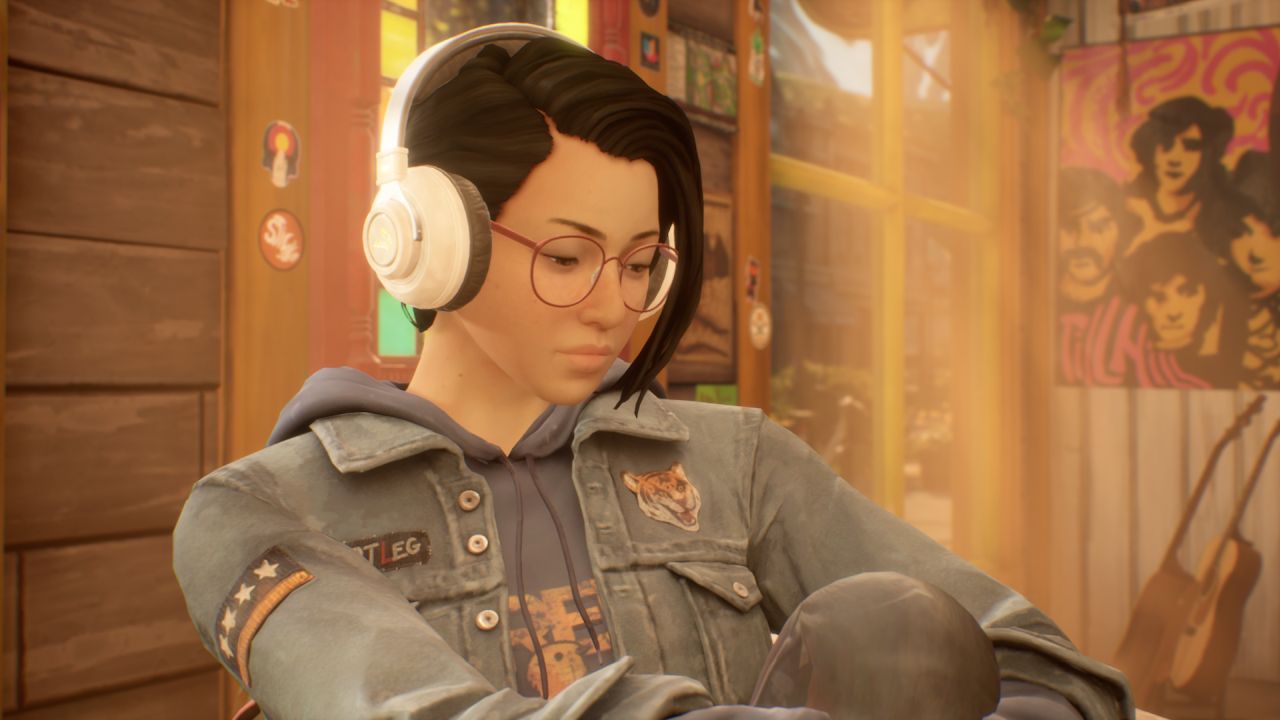
Unlike Before the Storm, True Colors is a fresh start. It has a slew of new characters, a different and interesting superpower, and an original setting. It’s structured like the previous games in the franchise, across five chapters, but they have all been released at once. The connection to the previous games is mainly thematic, with the biggest link being a side character from Before the Storm, and their presence turns out to be the equivalent of rolling a 20. But for all intents and purposes, this is a new adventure and that requires a new protagonist.
This time you play as Alex Chen, an amazing young woman with the ability to see emotions. The emotions appear as auras around people: blue is sadness, red is anger, and so on. If Alex concentrates, she can even understand exactly what people are thinking relating to the emotion. But when the emotions are strong, Alex gets overwhelmed and loses self-control. This side effect might be why Alex has been alone for years. In and out of group homes and foster care, she has no place to call her own. Her family broke apart years ago and now her older brother, Gabe, has reached out. He has asked her to come to the picturesque mining town of Haven Springs, Colorado.
Gabe has made a home in Haven Springs. He’s got a girlfriend and is becoming a caring father figure for her son. The opening chapter is an introduction to the places and people in Gabe’s life. After he shows you his spacious apartment above a bar, he hands you the keys. He wants Haven to be your home too. We see through Gabe’s actions that he is genuine, kind, funny, tolerant, and wants to do right by Alex to make up for lost time. It does not take long to warm to both him and the town.
But tragedy strikes and Gabe dies in a brutal accident. Just when Alex thought she found a new home, the future is ripped apart. Survivor’s guilt rises to the top as she learns how many people cared for her brother and how they have all lost something special.
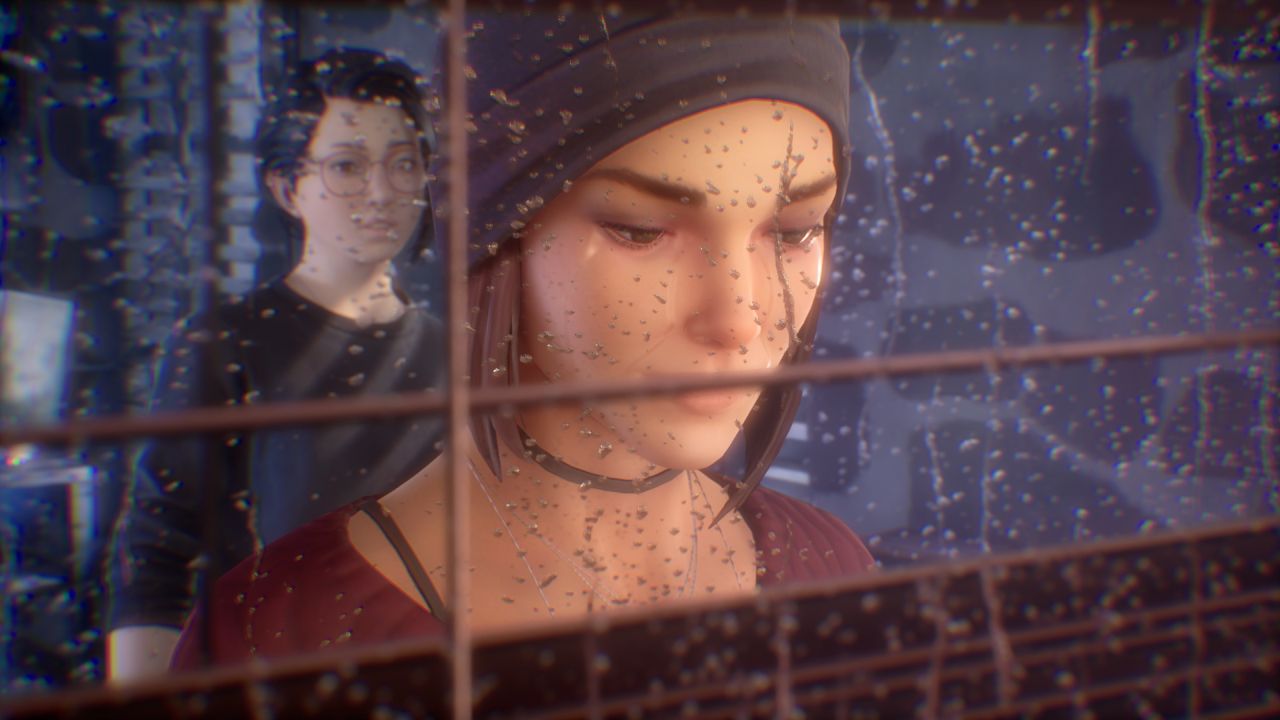
Fortunately misery loves company. Alex is in a rare position to help the many fantastic characters in Haven, who all suffer in their own way (mostly from Gabe’s passing). First she must scan their current emotional state and then identify objects in the world that are associated with that emotion. Then it is all about talking through their issues and maybe doing a small personable task that sets them at ease—and makes Alex even more likable. While scanning emotions functions the same each time, the individual tasks are customized for every situation.
Two of the best characters are Steph and Ryan, Gabe’s best friends. They also need help to cope with his sudden death. To ease their pain, Alex will play foosball with Steph and calm Ryan down when he’s angry. Although they find out about Alex’s power, it does not lead to anything too exciting. Nevertheless, both characters have excellent personalities. They make such a strong effort to be friendly that it impossible to resist their charms, which is probably why they are both optional romances for Alex.
Humor is another reason why many of the characters are awesome. True Colors is one of the funniest games in a while, and Alex plays a major role in the best jokes. The banter is smart and delivered with some brilliant voice acting and impeccable timing. There is more humor hidden away; a social media site contains all the quirks of a typical online platform, along with hilarious and topical interactions. Text messages from characters are funny, although they are sparse and might require scrolling. It definitely is worth investigating every corner of Haven Springs for laughs.
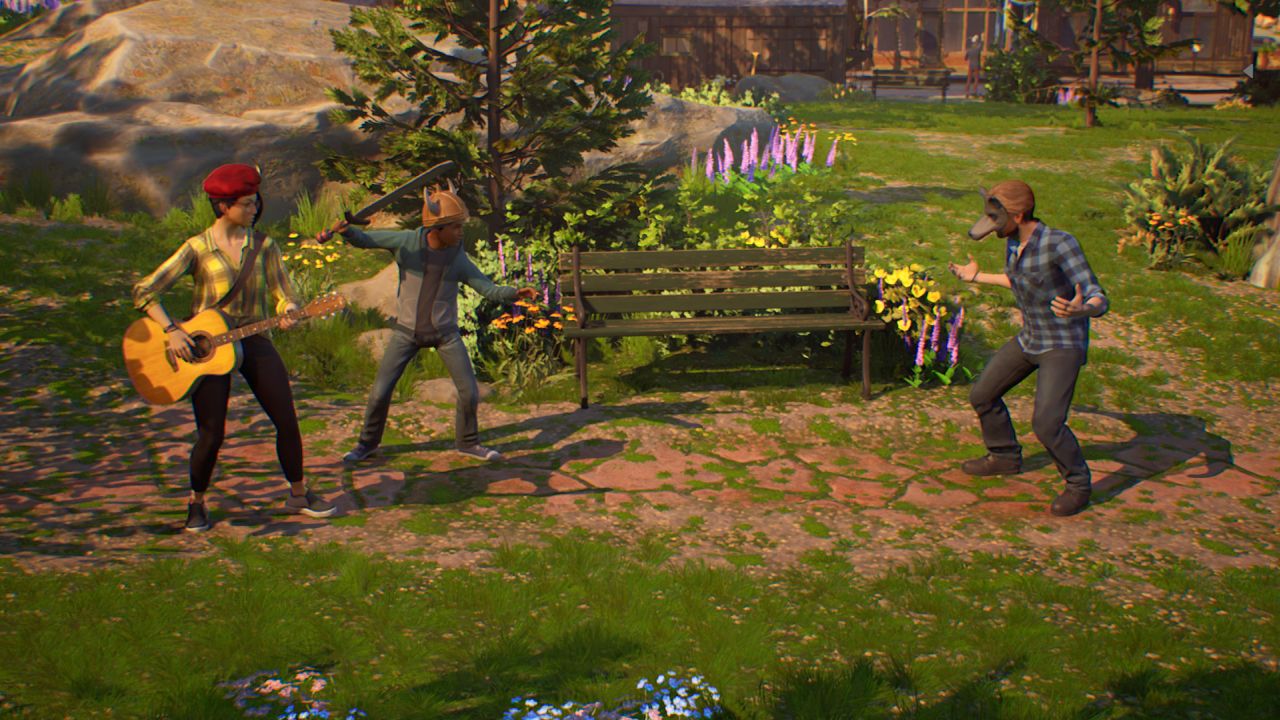
The other main source of fun is the LARP section that forms the bulk of the third chapter. The live-action role-play was created for the benefit of Gabe’s girlfriend’s son. Alex acts as a chaperone and they roam the streets of Haven to battle ‘monsters’ with basic turn-based combat. Many of the townsfolk dress up and play along. Even the music store is converted to a magic shop and the bar becomes the scene of a fake massacre. Despite it all being made up, it actually makes True Colors feel more real. And it is the perfect light refreshment, coming just at the right time. It also has a stellar ending that combines Alex’s emotional connection with a child’s imagination.
But it is not all fun and games. At times the game gets quite dark with its themes; helping an old woman with dementia is superbly done and shows a wide emotional range. There is also a shady conspiracy to solve, associated with Gabe’s death. Alex will seek help from her new friends to work out what happened to her brother. Unfortunately the conspiracy angle is quite bland. More like treading water, it is just peeling back a few of the same boring layers for little satisfaction.
The ending is a bit rushed and contrived. The last two chapters are short due to linearity, and abstract flashbacks drag the pace down to a crawl. Near the end is an outlandish final confrontation where the antagonist just stares into space and lets Alex break through emotionally; this is not natural or believable. And, depending on previous story choices, other characters fail to believe Alex too. After the main arc, players will get a montage of a potential future. While the montage is well-delivered with a poignant hook, it feels insufficient. The story will take about 11 hours to finish at a leisurely pace, which is shorter than the original game but at a higher price tier.
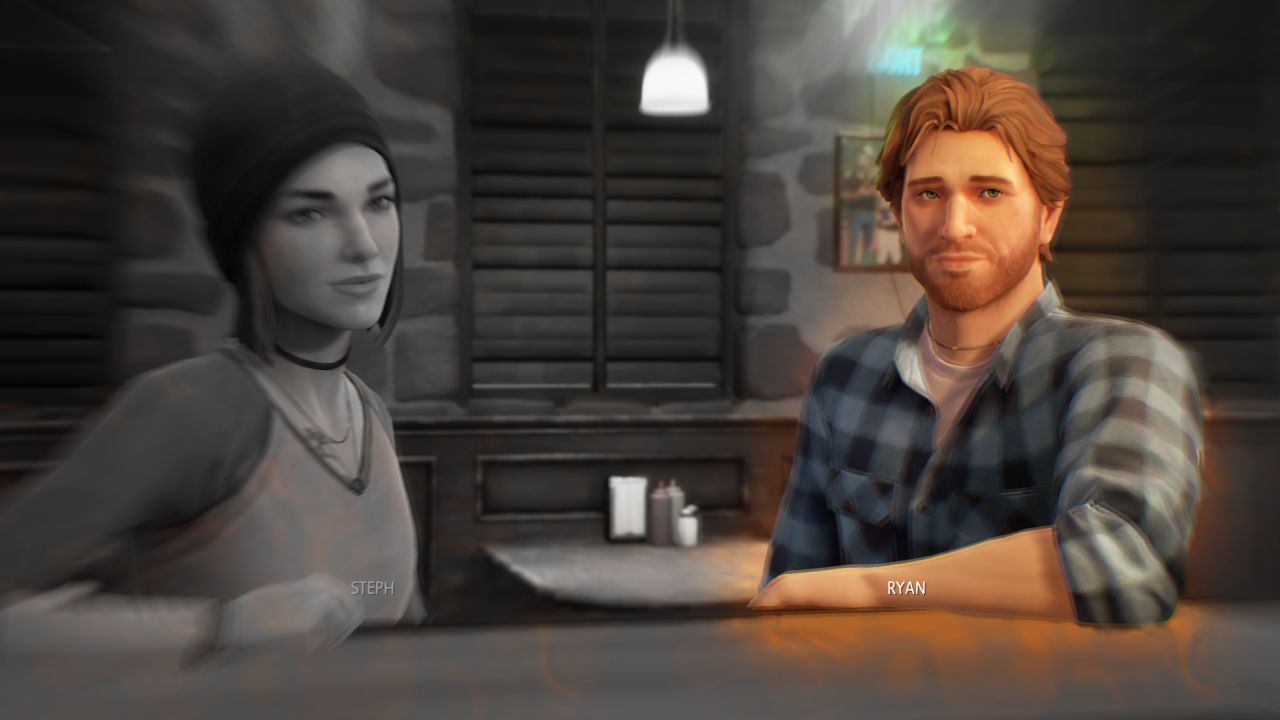
Choice and consequence improves value a tiny bit. Some interactions seem like they matter—the equivalent of talking somebody down off a ledge—but Alex’s different responses have no impact on what characters do or say. Dialogue does regularly change in conversations though, and because so much is funny, it is worth seeing the alternate responses. Big choices crop up a few times, with the telltale screen pause. A few of these make a difference. The two romance options only affect minor scenes, although they pull Alex in different directions. The most effectual choice involved an unconventional use of Alex’s powers, leading to an outburst and some confrontations. While big narrative changes are not a feature of True Colors, some slight alterations are worth seeing.
The title also features one of the best soundtracks in years. The indie-folk selection features soft guitar strumming, melancholy vocals, and light percussion. Angus & Julia Stone, mxmtoon, and Keaton Henson are the artists responsible for the best songs. It is the perfect fit for the franchise and utilized so well, so often. Although music is steadily distributed across the main narrative, optional ‘zen’ moments allow players to sit and contemplate, and leave whenever they choose; these musical interludes are a great way for players to self-pace their own emotions.
Visual presentation is not to be understated either. The setting of Haven Springs is pleasant, with a few scenic views—not unlike those in Tell Me Why—and a cool small-town vibe. Players can explore the town at leisure several times, even if there is not always a lot of interaction. The only technical blemishes in the town are long load times and some jarring texture streaming. But these do not negate art design that is a great match for the series with soft warm colors and saturated palettes. Characters and objects have a cartoon style but there is more detail and realism here than previous games. Animations are a highlight, as they provide many subtle emotional hints. While most characters display good body language, Alex’s intricate facial movements are a step above. Her eyelid twitching, lip twists, brow movements, and eyeball shifts all help to make Alex a fantastic, emotionally-rich protagonist.
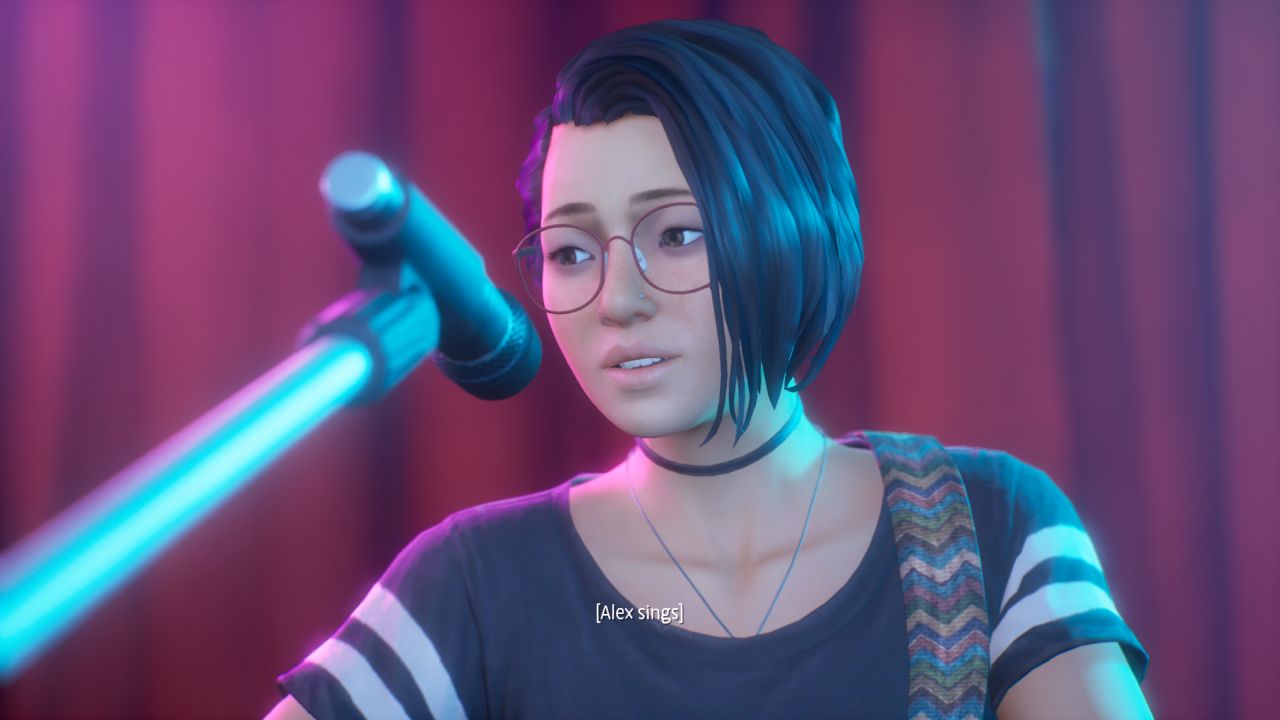
Narrative-driven adventure games do not come much better than Life is Strange: True Colors. The game features a remarkable protagonist with an empathy power that enhances storytelling via clever interactions. Side characters are fantastic due to their personalities and frequent humor. There are plenty of fun moments, including a colorful LARP segment that is probably the high point due to its timing and implementation. Sadly the ending is a bit rushed and the conspiracy angle is a wash, but neither is a huge detraction from what is a joy to experience the first time through. Deck Nine Games have (twice) proven capable when it comes to episodic narrative adventure games and now they have a golden opportunity to take the genre to even greater heights.
